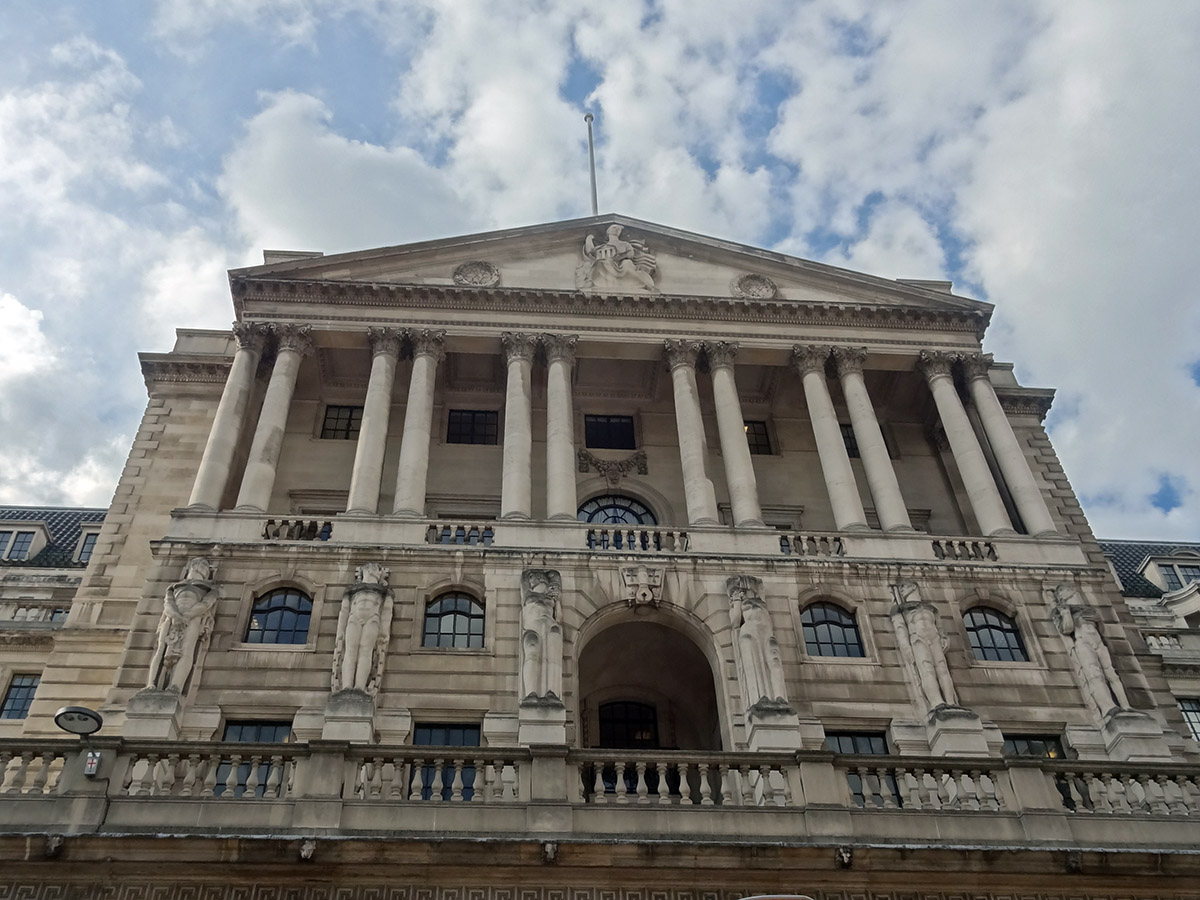 In this third blog about inflation, we focus on monetary policy to deal with the problem and bring inflation back to the target rate, which is typically 2 per cent around the world (including the eurozone, the USA and the UK). We ask the questions: was the response of central banks too timid initially, meaning that harsher measures had to be taken later; and will these harsher measures turn out to be excessive? In other words, has the eventual response been ‘too much, too late’, given that the initial measures were too little?
In this third blog about inflation, we focus on monetary policy to deal with the problem and bring inflation back to the target rate, which is typically 2 per cent around the world (including the eurozone, the USA and the UK). We ask the questions: was the response of central banks too timid initially, meaning that harsher measures had to be taken later; and will these harsher measures turn out to be excessive? In other words, has the eventual response been ‘too much, too late’, given that the initial measures were too little?
Inflation rates began rising in the second half of 2021 as economies began to open up as the pandemic subsided. Supply-chain problems drove the initial rise in prices. Then, following the Russian invasion of Ukraine in February 2022 and the adverse effects on oil, gas and grain prices, inflation rose further. In the UK, CPI inflation peaked at 11.1% in October 2022 (see chart 1 in the first of these three blogs). Across the whole EU-27, it peaked at 11.5% in October 2022; US inflation peaked at 9.1% in June 2022; Japanese inflation peaked at 4.3% in January 2023.
This raises the questions of why interest rates were not raised by a greater amount earlier (was it too little, too late?) and why they have continued to be raised once inflation rates have peaked (is it too much, too late?).
The problem of time lags
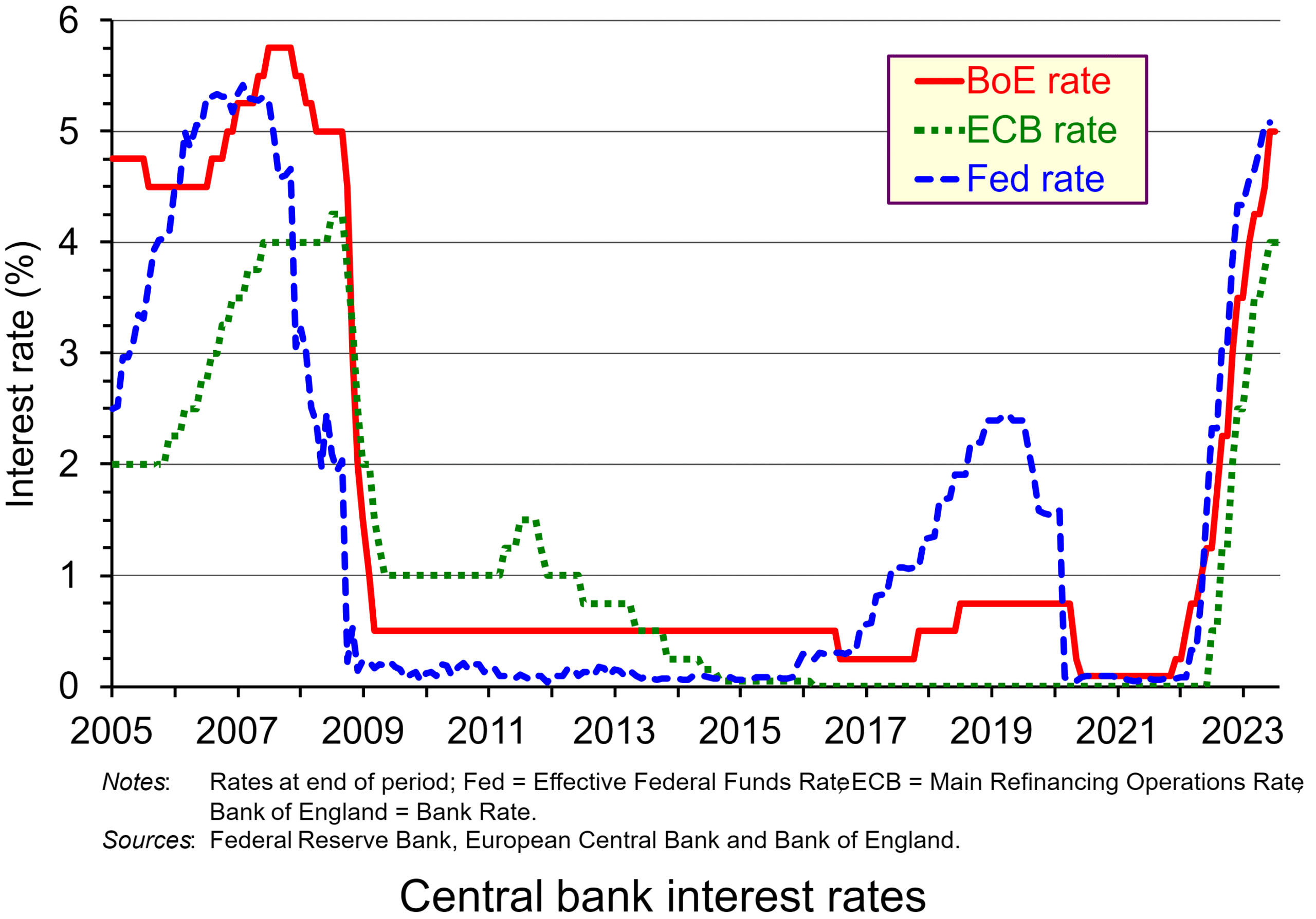 Both inflation and monetary policy involve time lags. Rising costs take a time to work their way through the supply chain. Firms may use old stocks for a time which are at the original price. If it is anticipated that costs will rise, central banks will need to take action early and not wait until all cost increases have worked their way through to retail prices.
Both inflation and monetary policy involve time lags. Rising costs take a time to work their way through the supply chain. Firms may use old stocks for a time which are at the original price. If it is anticipated that costs will rise, central banks will need to take action early and not wait until all cost increases have worked their way through to retail prices.
In terms of monetary policy, the lags tend to be long.
If central bank interest rates are raised, it may take some time for banks to raise savings rates – a common complaint by savers.
As far as borrowing rates are concerned, as we saw in the previous blog, loans secured on dwellings (mortgages) account for the majority of households’ financial liabilities (76.4% in 2021) and here the time lags between central bank interest rate changes and changes in people’s mortgage interest rates can be very long. Only around 14 of UK mortgages are at variable rates; the rest are fixed, typically for between 2 to 5 years. So, when Bank Rate changes, people on fixed rates will be unaffected until their mortgage comes up for renewal, when they can be faced with a huge increase in payments.
 Only around 21% of mortgages in England were/are due for renewal in 2023, and with 57% of these the old fixed rates were below 2%. Currently (July 2023), the average two-year fixed-rate mortgage rate in the UK is 6.81% (based on 75% loan to value (LTV)); the average five-year rate is 6.31% (based on 75% LTV). This represents a massive increase in interest rates, but for a relatively small proportion of homeowners and an even smaller proportion of total households.
Only around 21% of mortgages in England were/are due for renewal in 2023, and with 57% of these the old fixed rates were below 2%. Currently (July 2023), the average two-year fixed-rate mortgage rate in the UK is 6.81% (based on 75% loan to value (LTV)); the average five-year rate is 6.31% (based on 75% LTV). This represents a massive increase in interest rates, but for a relatively small proportion of homeowners and an even smaller proportion of total households.
But as more and more fixed-rate mortgages come up for renewal, so the number of people affected will grow, as will the dampening effect on aggregate demand as such people are forced to cut back on spending. This dampening effect will build up for many months.
And there is another time lag – that between prices and wages. Wages are negotiated periodically, normally annually or sometimes less frequently. Employees will typically seek a cost-of-living element in wage rises that covers price rises over the past 12 months, not inflation in the past month. If inflation is rising (or falling), such negotiations will not reflect the current situation. There is thus a time lag built in to such negotiations. Even if higher interest rates reduce inflation, the full effect can take some time because of this wages time lag.
 Other time lags include those involving ongoing capital projects. If construction is taking place, it will take some time to complete and in the meantime is unlikely to be stopped. Higher interest rates will affect capital investment decisions now, but existing projects are likely to continue to completion. As more projects are completed over time, so the effect of higher interest rates is likely to accumulate.
Other time lags include those involving ongoing capital projects. If construction is taking place, it will take some time to complete and in the meantime is unlikely to be stopped. Higher interest rates will affect capital investment decisions now, but existing projects are likely to continue to completion. As more projects are completed over time, so the effect of higher interest rates is likely to accumulate.
Then there is the question of savings. During the pandemic, many people increased their savings as their opportunities for spending were more limited. Since then, many people have drawn on these savings to fund holidays, eating out and other leisure activities. Such spending is likely to taper off as savings are reduced. Again, the interest rises may prove to have been excessive as a means of reducing aggregate demand.
These time lags suggest that after some months the economy will have been excessively dampened and that the policy will have ‘overshot’ the mark. Had interest rates been raised more rapidly earlier and by larger amounts, the peak level of rates may not have needed to be so high.
Perhaps one of the biggest worries about raising interest rates excessively because of time lags is the effect on corporate and government debt. Highly indebted companies and countries will find that a large increase in interest rates makes servicing their debt much harder. For example, Thames Water, the UK’s biggest water and sewerage company accumulated some £14 billion in debt during the era of low interest rates. It has now declared that it cannot service these debts and is on the brink of insolvency. In the case of governments, as increasing amounts have to be spent on servicing their debt, so they may be forced to cut expenditure elsewhere. This will have a dampening effect on the economy – but with a time lag.
The distribution of pain
 Those with large credit-card debt and large mortgages coming up for renewal or at variable rates will have borne the brunt of interest rate rises. These people, such as young people with families, are often those most affected by inflation, with a larger proportion of their expenditure on energy and food. Other people adversely affected are tenants where landlords raise rents to cover their higher mortgage payments.
Those with large credit-card debt and large mortgages coming up for renewal or at variable rates will have borne the brunt of interest rate rises. These people, such as young people with families, are often those most affected by inflation, with a larger proportion of their expenditure on energy and food. Other people adversely affected are tenants where landlords raise rents to cover their higher mortgage payments.
Those with no debts will have been little affected by the hike in interest rates, unless the curbing of aggregate demand affects their chances of overtime or reduces available shifts or, worse still, leads to redundancy.
Excessive rises in interest rates exacerbate these distributional effects.
Articles
- UK homeowners face huge rise in payments when fixed-rate mortgages expire
The Guardian, Richard Partington (17/6/23)
- Economic ‘Bazball’ will have replaced UK’s safety-first approach to inflation and growth by 2025
The Guardian, Larry Elliott (16/7/23)
- The Bank of Canada just hiked interest rates for the sixth time — is it too late?
The Conversation, Alexander David (27/10/22)
- Monetary Policy Report Press Conference Opening Statement
Bank of Canada, Tiff Macklem (12/7/23)
- Some reflections on Monetary Policy past, present and future
Bank of England, Speech, Michael Saunders (18/6/22)
- Expectations, lags, and the transmission of monetary policy
Bank of England, Speech, Catherine L. Mann (23/2/23)
- Europe’s monetary policy shift comes (too) late
DW, Henrik Böhme (6/9/22)
- Nobel Prize-winning economist says there’s no need for the Fed to keep hiking interest rates
CNBC, Sam Meredith (14/7/23)
- Three Uncomfortable Truths For Monetary Policy
IMF, Speech, Gita Gopinath (26/6/23)
- Inflation’s return changes the world
Financial Times, Martin Wolf (4/7/23)
- The next revolution in monetary policy is underway
Reuters, Felix Martin (30/6/23)
- Inflation may be coming down but its unequal effects can still have a big impact on wellbeing
The Conversation, Alberto Prati (19/7/23)
- Why central banks should stop raising interest rates
The Conversation, Muhammad Ali Nasir (27/9/23)
 Bank of England’s ‘regrettable’ mistakes fuelled inflation, its former top economist says
Bank of England’s ‘regrettable’ mistakes fuelled inflation, its former top economist saysSky News, Daniel Binns (5/9/23)
Questions
- For what reasons might a central bank be unwilling to raise interest rates by more than 0.25 or 0.5 percentage points per month?
- What instruments other than changing interest rates does a central bank have for influencing aggregate demand?
- Distinguish between demand-pull and cost-push inflation.
- Why might using interest rates to curb inflation be problematic when inflation is caused by adverse supply shocks?
- How are expectations of consumers and firms relevant in determining (a) the appropriate monetary policy measures and (b) their effectiveness?
- How could a careful use of a combination of monetary and fiscal policies reduce the redistributive effects of monetary policy?
- How might the use of ‘forward guidance’ by central banks reduce the need for such large rises in interest rates?
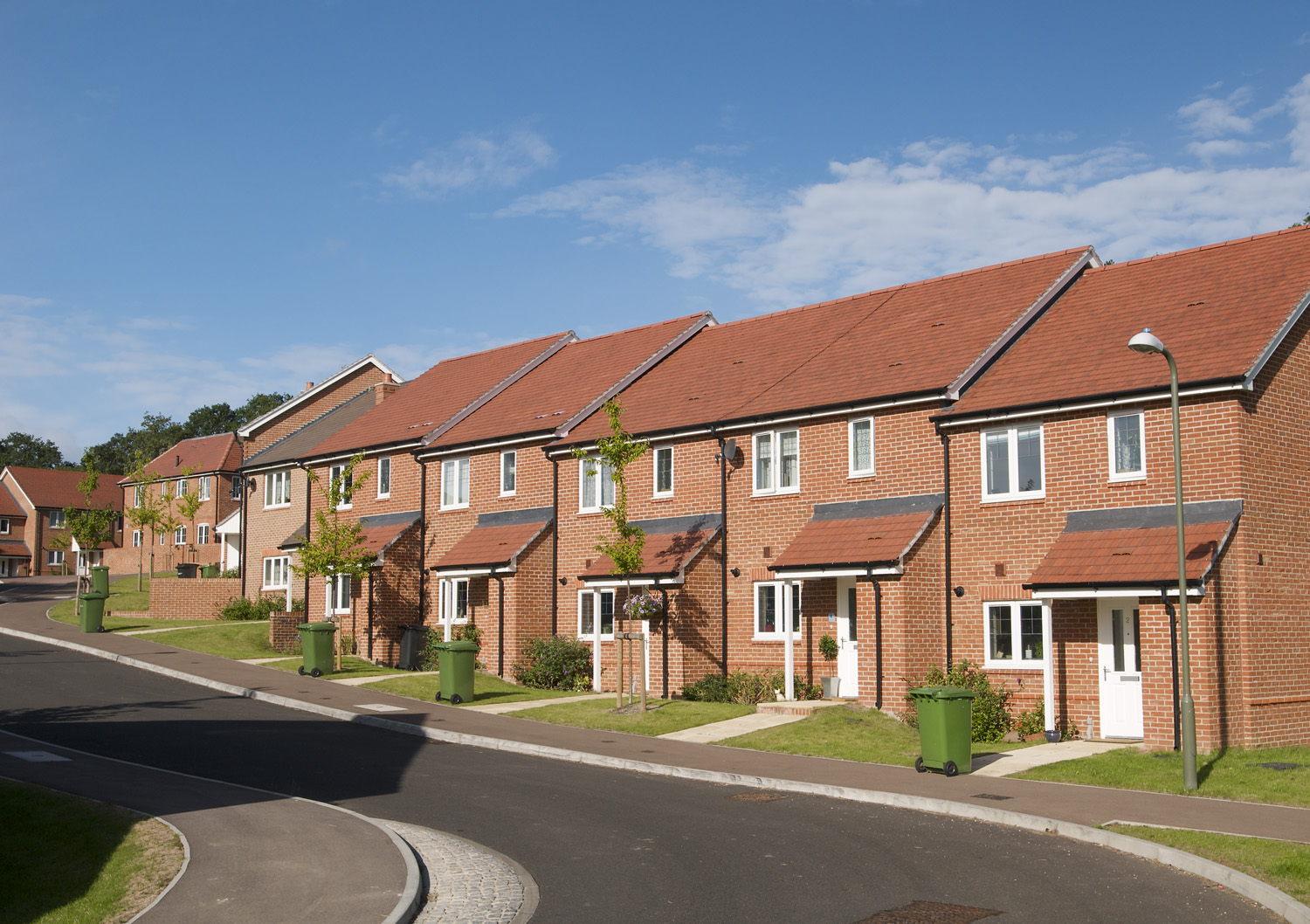 This is the second of three blogs looking at high inflation and its implications. Here we look at changes in the housing market and its effects on households. Another way of analysing the financial importance of the housing and mortgage markets is through the balance sheets and associated flow accounts of the household sector.
This is the second of three blogs looking at high inflation and its implications. Here we look at changes in the housing market and its effects on households. Another way of analysing the financial importance of the housing and mortgage markets is through the balance sheets and associated flow accounts of the household sector.
We used the concept of balance sheets in our blog Bank failures and the importance of balance sheets. In the blog we referred to the balance-sheet effects from interest rate hikes on the financial well-being of financial institutions.
The analysis is analogous for households. Again, we can identify two general effects: rising borrowing and debt-servicing costs, and easing asset prices.
The following table shows the summary balance sheet of the UK household sector in 1995 and 2021.

Source: National balance sheet estimates for the UK: 1995 to 2021 (January 2023) and series RPHA, ONS
The total value of the sector’s net wealth (or ‘worth’) is the sum of its net financial wealth and its non-financial assets. The former is affected by the value of the stock of outstanding mortgages, which we can see from row 3 in the table (‘loans secured on dwellings’) has increased from £390 billion in 1995 to £1.56 trillion in 2021. This is equivalent to an increase from 70 to 107 per cent of the sector’s annual disposable income. This increase helps to understand the sensitivity of the sector’s financial position to interest rate increases and the sizeable cash flow effects. These effects then have implications for the sector’s spending.
 Housing is also an important asset on household balance sheets. The price of housing reflects both the value of dwellings and the land on which they sit, and these are recorded separately on the balance sheets. Their combined balance sheet value increased from £1.09 trillion (£467.69bn + £621.49bn) in 1995 to £6.38 trillion (£1529.87bn + £4853.16bn) in 2021 or from 128% of GDP to 281%.
Housing is also an important asset on household balance sheets. The price of housing reflects both the value of dwellings and the land on which they sit, and these are recorded separately on the balance sheets. Their combined balance sheet value increased from £1.09 trillion (£467.69bn + £621.49bn) in 1995 to £6.38 trillion (£1529.87bn + £4853.16bn) in 2021 or from 128% of GDP to 281%.
The era of low inflation and low interest rates that had characterised the previous two decades or so had helped to boost house price growth and thus the value of non-financial assets on the balance sheets. In turn, this had helped to boost net worth, which increased from £2.78 trillion in 1995 to £12.29 trillion in 2021 or from 319% of GDP to 541%.
Higher interest rates and wealth
 The advent of higher interest rates was expected not only to impact on the debt servicing costs of households but the value of assets, including, in the context of this blog, housing. As Chart 3 in the previous blog helped to show, higher interest rates and higher mortgage repayments contributed to an easing of house price growth as housing demand eased. On the other hand, the impact on mortgaged landlords helped fuel the growth of rental prices as they passed on their increased mortgage repayment costs to tenants.
The advent of higher interest rates was expected not only to impact on the debt servicing costs of households but the value of assets, including, in the context of this blog, housing. As Chart 3 in the previous blog helped to show, higher interest rates and higher mortgage repayments contributed to an easing of house price growth as housing demand eased. On the other hand, the impact on mortgaged landlords helped fuel the growth of rental prices as they passed on their increased mortgage repayment costs to tenants.
Higher interest rates not only affect the value of housing but financial assets such as corporate and government bonds whose prices are inversely related to interest rates. Research published by the Resolution Foundation in July 2023 estimates that these effects are likely to have contributed to a fall in the household wealth from early 2021 to early 2023 by as much as £2.1 trillion.
The important point here is that further downward pressure on asset prices is expected as they adjust to higher interest rates. This and the impact of higher debt servicing costs will therefore continue to impact adversely on general financial well-being with negative implications for the wider macroeconomic environment.
Articles
- The Mortgage Crunch
Resolution Foundation, Simon Pittaway (17/6/23)
- Peaked Interest?
Resolution Foundation, Molly Broome, Ian Mulheirn and Simon Pittaway (17/7/23)
- UK inflation to fall to lowest level since March 2022 but Bank of England still tipped to hike interest rates
City A.M., Jack Barnett (17/7/23)
- Mortgage payments set to jump by £500 for one million households
BBC News, Tom Espiner (13/7/23)
- Interest rates: Big rise less likely after inflation surprise
BBC News, Daniel Thomas, Faisal Islam & Dharshini David (19/7/23)
- Rising Mortgage Costs. What Can Be Done?
NIESR blog, Max Mosley and Adrian Pabst (17/7/23)
- UK interest rates forecast to rise less sharply after inflation falls to 7.9%
The Guardian, Richard Partington (19/7/23)
- Mortgage costs: More Scots falling behind on repayments
Herald Scotland, Kristy Dorsey (18/7/23)
Report
Data
Questions
- What possible indicators could be used to assess the affordability of residential house prices?
- What do you understand by the concept of the monetary policy transmission mechanism? How do the housing and mortgage markets relate to this concept?
- What factors might affect the proportion of people taking out fixed-rate mortgages rather than variable-rate mortgages?
- What is captured by the concept of net worth? Discuss how the housing and mortgage markets affect the household sector’s net worth.
- What are cash-flow effects? How do rising interest rates effect savers and borrowers?
- How might wealth effects from rising interest rates impact younger and older people differently?
- Discuss the ways by which house price changes could affect household consumption.
On 3 November, the Bank of England announced the highest interest rate rise in 33 years. It warned that the UK is facing the longest recession since records began. With the downturn starting earlier than expected and predicted to last for longer, households, businesses and the government are braced for a challenging few years ahead.
Interest rates
 The Monetary Policy Committee increased Bank Rate to 3% from the previous rate of 2.25%. This 75-basis point increase is the largest since 1989 and is the eighth rise since December. What is more, the Bank has warned that it will not stop there. These increases in interest rates are there to try to tackle inflation, which rose to 10.1% in September and is expected to be 11% for the final quarter of this year. Soaring prices are a growing concern for UK households, with the cost of living rising at the fastest rate for 40 years. It is feared that such increases in the Bank’s base rate will only worsen household circumstances.
The Monetary Policy Committee increased Bank Rate to 3% from the previous rate of 2.25%. This 75-basis point increase is the largest since 1989 and is the eighth rise since December. What is more, the Bank has warned that it will not stop there. These increases in interest rates are there to try to tackle inflation, which rose to 10.1% in September and is expected to be 11% for the final quarter of this year. Soaring prices are a growing concern for UK households, with the cost of living rising at the fastest rate for 40 years. It is feared that such increases in the Bank’s base rate will only worsen household circumstances.
There are various causes of the current cost-of-living crisis. These include the pandemic’s effect on production, the aftermath in terms of supply-chain problems and labour shortages, the war in Ukraine and its effect on energy and food prices, and poor harvests in many parts of the world, including many European countries. It has been reported that grocery prices in October were 4.7% higher than in October 2021. This is the highest rate of food price inflation on record and means shoppers could face paying an extra £682 per year on average.
There is real concern about the impact of the interest rates rise on the overall economy but, in particular, on peoples’ mortgages. Bank of England Governor, Andrew Bailey, warned of a ‘tough road ahead’ for UK households, but said that the MPC had to act forcefully now or things ‘will be worse later on’.
However, it could be argued that there was a silver lining in Thursday’s announcement. The future rises in interest rates are predicted to peak at a lower rate than previously thought. Amongst all the mini-budget chaos, there was concern that rates could surpass the 6% mark. Now the Bank of England has given the assurance that future rate rises will be limited and that Bank Rate should not increase beyond 5% by next autumn. The Bank was keen to reassure markets of this by making clear the thinking behind the decision in the published minutes of MPC meeting.
Recession
 With the Bank warning of the longest recession since records began, what does this actually mean? Economies experience periods of growth and periods of slowdown or even decline in real GDP. However, a recession is defined as when a country’s economy shrinks for two three-month periods (quarters) in a row. The last time the UK experienced a recession was in 2020 during the height of the pandemic. During a recession, businesses typically make less profits, pay falls, some people may lose their jobs and unemployment rises. This means that the government receives less money in taxation to use on public services such as health and education. Graduates and school leavers could find it harder to get their first job, while others may find it harder to be promoted or to get big enough pay rises to keep pace with price increases. However, the pain of a recession is typically not felt equally across society, and inequality can increase.
With the Bank warning of the longest recession since records began, what does this actually mean? Economies experience periods of growth and periods of slowdown or even decline in real GDP. However, a recession is defined as when a country’s economy shrinks for two three-month periods (quarters) in a row. The last time the UK experienced a recession was in 2020 during the height of the pandemic. During a recession, businesses typically make less profits, pay falls, some people may lose their jobs and unemployment rises. This means that the government receives less money in taxation to use on public services such as health and education. Graduates and school leavers could find it harder to get their first job, while others may find it harder to be promoted or to get big enough pay rises to keep pace with price increases. However, the pain of a recession is typically not felt equally across society, and inequality can increase.
The Bank had previously expected the UK to fall into recession at the end of this year but the latest data from the Office for National Statistics (ONS) show that GDP fell by 0.3% in the three months to August. The Bank is predicting that GDP will shrink by 0.5% between May and August 2023, followed by a further fall of 0.3% between September and December. The Bank then expects the UK economy to remain in recession throughout 2023 and the first half of 2024.
With the higher interest rates, borrowing costs are now at their highest since 2008, when the UK banking system faced collapse in the wake of the global financial crisis. The Bank believes that by raising interest rates it will make it more expensive to borrow and encourage people not to spend money, easing the pressure on prices in the process. It does, however, mean that savers will start to benefit from higher rates (but still negative real rates), but it will have a knock-on effect on those with mortgages, credit card debt and bank loans.
The recession in 2020 only lasted for six months, although the 20.4% reduction in the UK economy between April and June that year was the largest on record. The one before that started in 2008 with the global financial crisis and went on for five quarters. Whilst it will not be the UK’s deepest downturn, the Bank stressed that it will be the longest since records began in the 1920s.
Mortgages
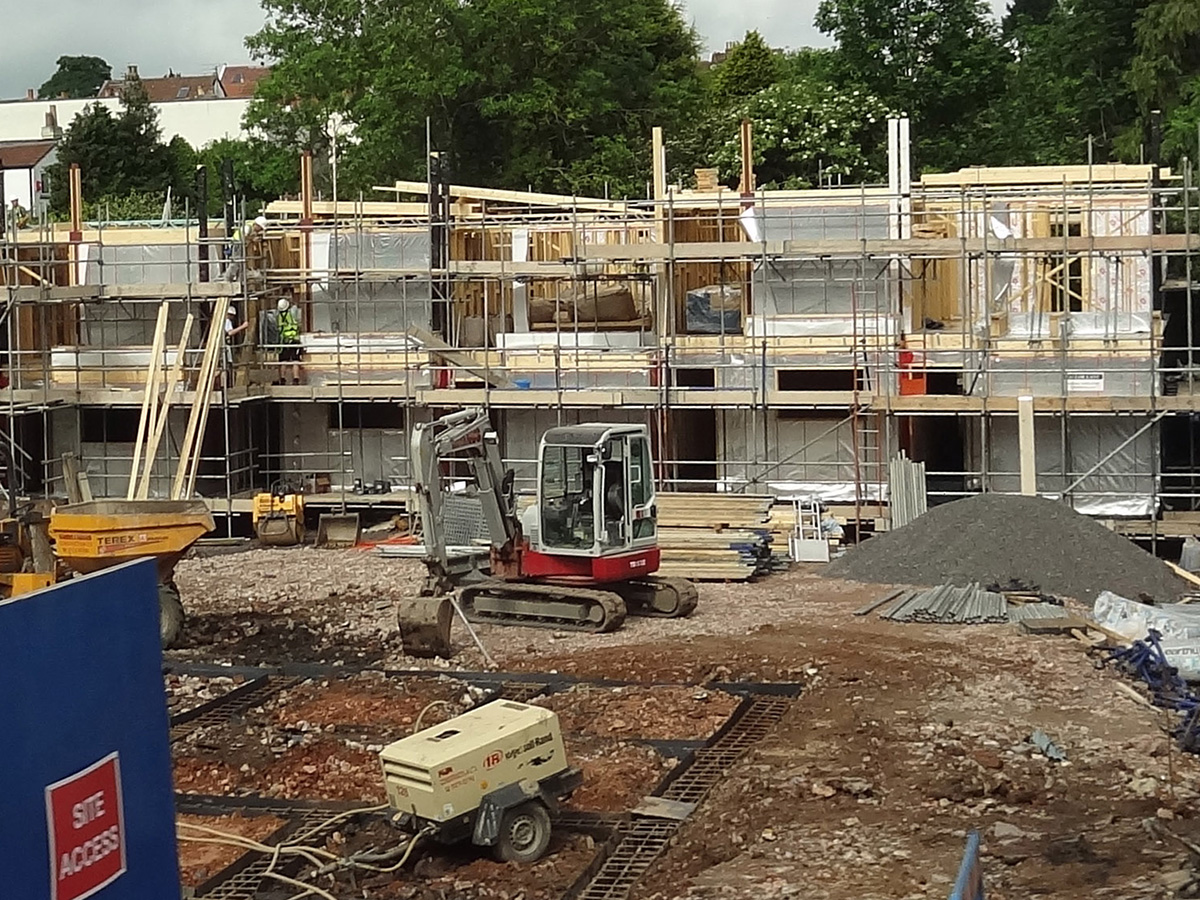 Those with mortgages are rightly feeling nervous about the impact that further increases in mortgage interest rates will have on their budgets. Variable mortgage rates and new fixed rates have been rising for several months because of this year’s run of rate rises but they shot up after the mini-Budget. The Bank forecasts that if interest rates continue to rise, those whose fixed rate deals are coming to an end could see their annual payments soar by an average of £3000.
Those with mortgages are rightly feeling nervous about the impact that further increases in mortgage interest rates will have on their budgets. Variable mortgage rates and new fixed rates have been rising for several months because of this year’s run of rate rises but they shot up after the mini-Budget. The Bank forecasts that if interest rates continue to rise, those whose fixed rate deals are coming to an end could see their annual payments soar by an average of £3000.
Homebuyers with tracker or variable rate mortgages will feel the pain of the rate rise immediately, while the estimated 300 000 people who must re-mortgage this month will find that two-year and five-year fixed rates remain at levels not seen since the 2008 financial crisis. However, the Bank said that the cost of fixed-rate mortgages had already come down from the levels seen at the height of the panic in the wake of Kwasi Kwarteng’s mini-Budget, which sent them soaring above 6%.
There is a fear of the devastating impact on those who simply cannot afford further increases in payments. The Joseph Rowntree Foundation (JRF) said an extra 120 000 households in the UK, the equivalent of 400 000 people, will be plunged into poverty when their current mortgage deal ends. The analysis assumes that mortgage rates remain high, with homeowners forced to move to an interest rate of around 5.5%. For people currently on fixed rates typically of around of 2% which are due to expire, this change would mean a huge increase. Such people, on average, would find the proportion of their monthly income going on housing costs rising from 38% to 54%. In cash terms this equates to an average increase of £250, from £610 a month to £860 a month.
In addition to these higher monthly home-loan costs threatening to pull another 400 000 people into poverty, such turmoil in the mortgage market would increase competition for rental properties and could result in rents for new lets rising sharply as the extra demand allows buy-to-let landlords to pass on their higher loan costs (or more).
Unemployment
Since the mini-Budget, the level of the pound and government borrowing costs have somewhat recovered. However, mortgage markets and business loans are still showing signs of stress, adding to the prolonged hit to the economy. The Bank now forecasts that the unemployment rate will rise, while household incomes will come down too. The unemployment rate is currently at its lowest for 50 years, but it is expected to rise to nearly 6.5%.
Looking to the future
 It is the case that the lasting effects of the pandemic, the war in Ukraine and the energy shock have all played their part in the current economic climate. However, it could be argued that the Bank and the government are now making decisions that will inflict further pain and sacrifice for millions of households, who are already facing multi-thousand-pound increases in mortgage, energy and food bills.
It is the case that the lasting effects of the pandemic, the war in Ukraine and the energy shock have all played their part in the current economic climate. However, it could be argued that the Bank and the government are now making decisions that will inflict further pain and sacrifice for millions of households, who are already facing multi-thousand-pound increases in mortgage, energy and food bills.
There have been further concerns raised about the possible tax rises planned by the Chancellor Jeremy Hunt. If large tax rises and spending cuts are set out in the Autumn Statement of 17 November, the Bank of England’s chief economist has warned that Britain risks a deeper than expected economic slowdown. This could weigh on the British economy by more than the central bank currently anticipates, in a development that would force it to rethink its approach to setting interest rates.
There is no doubt that the future economic picture looks painful, with the UK performing worse than the USA and the eurozone. The Bank Governor, Andrew Bailey, believes that the mini-Budget had damaged the UK’s reputation internationally, stating, ‘it was very apparent to me that the UK’s position and the UK’s standing had been damaged’. However, both the Governor and the Chancellor or the Exchequer agree that action needs to be taken now in order for the economy to stabilise long term.
Jeremey Hunt, the Chancellor, explained that the most important thing the British government can do right now is to restore stability, sort out the public finances and get debt falling so that interest rate rises are kept as low as possible. This echoes the Bank’s belief in the importance of acting forcefully now in order to prevent things being much worse later on. With the recession predicted to last into 2024, the same year as a possible general election, the Conservatives face campaigning to remain in government at the tail end of a prolonged slump.
Report
Articles
- Bank of England expects UK to fall into longest ever recession
BBC News, Dearbail Jordan & Daniel Thomas (4/11/22)
- What is a recession and how could it affect me?
BBC News (3/11/22)
- Is it right to raise interest rates in a recession?
BBC News, Faisal Islam (4/11/22)
- Rising interest rates: why the Bank of England has increased rates again and what to expect next
The Conversation, Francesc Rodriguez-Tous (7/11/22)
- Bank of England raises interest rates by 0.75 percentage points
Financial Times, Chris Giles and Delphine Strauss (3/11/22)
- Bank of England raises its benchmark rate by 75 basis points, its biggest hike in 33 years
CNBC, Elliot Smith (3/11/22)
- Interest rate rises to 3% as Bank of England imposes biggest hike for three decades
Sky News, Ed Conway (3/11/22)
 Interest Rates: What’s behind the rise?
Interest Rates: What’s behind the rise?Sky News on YouTube, Paul Kelso (3/11/22)
- Falls in UK mortgage rates predicted as BoE signals dovish outlook
Financial Times, James Pickford and Siddharth Venkataramakrishnan (3/11/22)
- BoE outlines two bleak scenarios for taming inflation
Financial Times, Chris Giles (3/11/22)
- Bank of England warns of longest recession in 100 years as it raises rates to 3%
The Guardian, Larry Elliott and Phillip Inman (3/11/22)
- UK mortgage rate rises ‘will put extra 400,000 people in poverty’
The Guardian, Zoe Wood (4/11/22)
- Large tax rises from Jeremy Hunt ‘could put UK at risk of deeper slowdown’
The Guardian, Richard Partington (7/11/22)
- Bank of England will raise interest rates again, says chief economist
The Guardian, Richard Partington (8/11/22)
Questions
- Define the term ‘recession’ and how is it measured.
- Explain what happens to the key macroeconomic indicators during this period of the business cycle.
- Which policies would governments normally implement to get a economy into the
- expansionary/recovery phase of the business cycle and how do they work?
- What is the issue of raising interest rates during a downturn or recession?
- With unemployment expected to rise, explain what type of unemployment this is. What policies could be introduced to reduce this type of unemployment?
 In July this year, the UK saw the highest annual house price inflation rate since May 2003. The housing market is experiencing an excess demand for houses. There is a greater demand from buyers than there are homes for sale. This has led to a double-digit annual rise for the 10th consecutive month. Nationwide building society data show that UK house prices rose by 10% in the year to August 2022, with the typical property price rising by £50 000 in the past two years to £273 751.
In July this year, the UK saw the highest annual house price inflation rate since May 2003. The housing market is experiencing an excess demand for houses. There is a greater demand from buyers than there are homes for sale. This has led to a double-digit annual rise for the 10th consecutive month. Nationwide building society data show that UK house prices rose by 10% in the year to August 2022, with the typical property price rising by £50 000 in the past two years to £273 751.
The market has seen this continued growth in house prices despite the growing pressure on buyers’ budgets. It is even reported that estate agents are seeing a recent surge in activity. However, can the housing market continue to grow, or will we witness a crash?
House market activity
There are also signs that the housing market is now losing some momentum. According to the Nationwide, the average price of a home was £294 260 in August, 0.4% higher than the previous month. Although this marked another record high, the rise was less than earlier in the year. Halifax called the monthly rise ‘relatively modest’ compared with the rapid house price inflation that has been seen in recent times, where the average monthly increase in house prices has been 0.9%. The latest increase marked a return to growth for house prices, after they fell in July for the first time in more than a year.
However, the annual growth did slow in August, despite house prices still growing. The annual rate of house price growth dropped to 11.5% from 11.8% in July – the lowest level in three months. The Nationwide is predicting that an increase in energy costs and rising mortgage interest rates will add to the pressure on household budgets in the coming months. Energy prices are continually rising, and it is suggested that the least energy-efficient properties could typically see bills surge by £2700 a year, or £225 a month. This added squeeze on households’ disposable income, combined with the expectation that that inflation is set to remain in double digits into next year, is predicted to slow house price increases further or even cause them to fall.
Barratt Developments, the country’s biggest housebuilder, stated that the number of homes reserved each week until the end of August had fallen below the level of a year earlier, and was now lower than before the coronavirus pandemic. This has been partly driven by people anticipating further rises in interest rates and provides further evidence of a slowdown in the housing market.
Bank of England decisions on interest rates
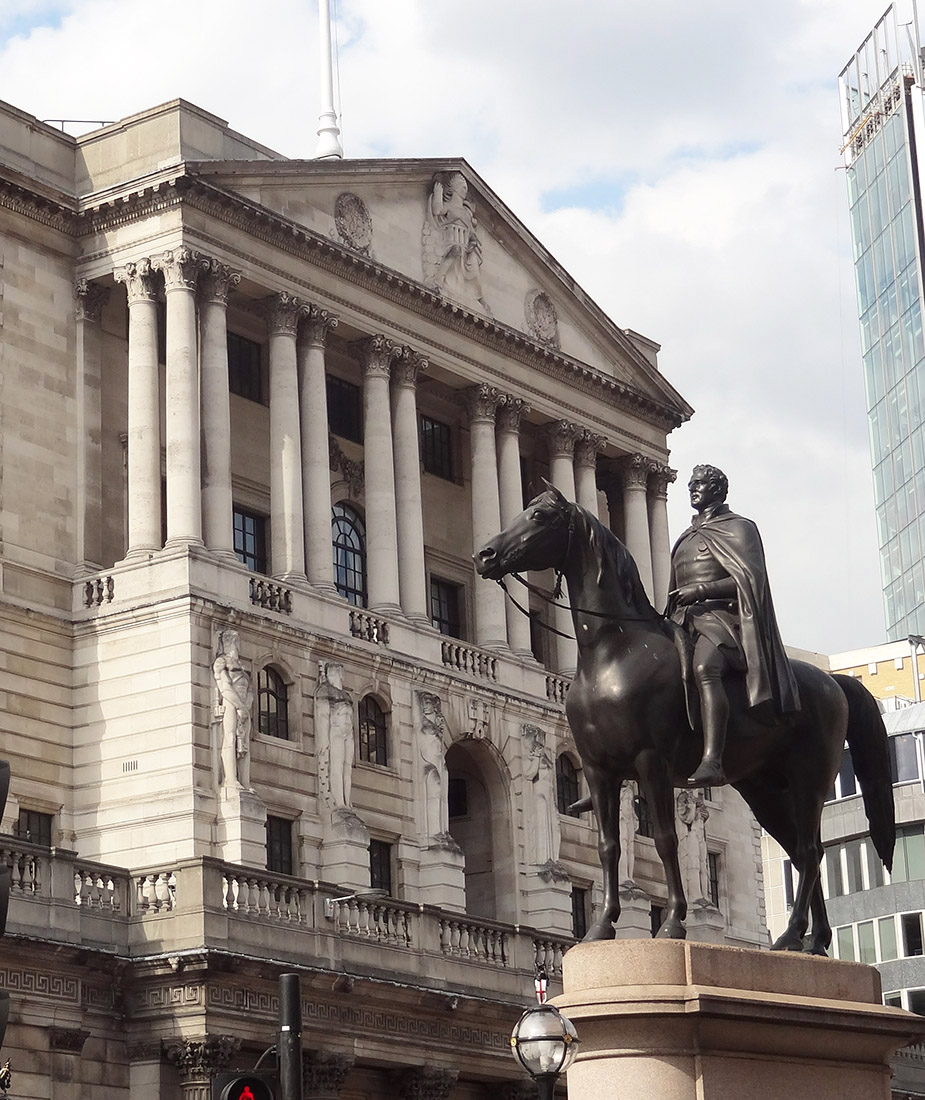 In early August, the Bank of England announced its biggest increase in interest rates in 27 years, taking the UK base rate from 1.25% to 1.75%, a 13-year high. This rise in the base rate, which has a knock-on effect on other interest rates, was an attempt to control rising inflation as energy and food prices soared.
In early August, the Bank of England announced its biggest increase in interest rates in 27 years, taking the UK base rate from 1.25% to 1.75%, a 13-year high. This rise in the base rate, which has a knock-on effect on other interest rates, was an attempt to control rising inflation as energy and food prices soared.
Then, on Thursday 22nd September, the Bank of England announced a further 0.5 percentage point rise in the base rate to 2.25%. This is now the highest level for 14 years, but this is unlikely to be the peak as it is expected that the Bank will continue raising rates into next year.
The government’s mini-Budget on 23 September involved a price cap on energy prices, estimated to cost around £150 billion, and various tax cuts. The package would be funded largely by borrowing. This is likely to drive interest rates up further. Indeed, in response to the package, the interest rate on new government bonds soared and price of existing bonds (which pay a fixed amount per annum) correspondingly fell, thereby increasing their yield. Yields rose above 4%; they were just 1.3% rate at the start of the year.
These further increases in interest rates will have a negative impact on the market as they feed through to mortgage rates, which have already increased noticeably recently. Indeed, following the mini-Budget and the rise in bond prices, around half the mortgage products on offer to new buyers or those re-mortgaging were withdrawn. Many households with mortgages will thus see their costs rise. Experts have warned that borrowers in the UK are especially exposed, with many people having mortgages tracking central bank rates or having short-term fixed deals set to expire. Those on fixed-rate deals will not be immediately affected, although their costs could jump when their deals come up for renewal.
The impact of a recession
Even though the housing market is slowing, it is nowhere near a crash. But, with the Bank of England predicting a recession, there is concern about the impact on the housing market. In August, the Bank had warned that Britain was likely to enter into a recession by December this year and predicted it to last 15 months. However, with the announcement of higher interest rates, the Bank now warns that the UK may already be in a recession. The central bank had previously expected the economy to grow between July and September, but it now believes it will have shrunk by 0.1%. This comes after the economy already shrank slightly between April and June.
A recession is defined as when an economy shrinks for two consecutive quarters. During a recession, house prices typically flatline or decrease but it all depends on how severe the recession is. Historically, when there is a deep and prolonged contraction in the economy with rising unemployment, house prices tend to fall.
Finance experts have predicted that the UK will suffer its longest downturn since the 2008 financial crisis. The global financial crisis saw the availability of mortgage finance contract, making it much harder for people to borrow, thereby reducing the demand for homes. This, together with rising unemployment, resulted in average house prices falling by 12%. It was not until 2010 that the housing market in London began to recover and not until 2013 in the wider UK market.
The BoE’s Monetary Policy Committee (MPC) have warned:
Real household post-tax income is projected to fall sharply in 2022 and 2023, while consumption growth turns negative.
This will be the first recession in the UK since the height of the Covid crisis 2020. However, then the housing market didn’t behave in the typical way and property prices continued rising. This was fuelled by people working from home, which encouraged both house movers and first-time buyers to seek houses with sufficient space. The housing market has been rampant ever since as people have taken advantage of low interest rates and also of the stamp duty holiday between July 2020 and September 2021 (see the blog, The red hot housing market).
This time, however, the predicted recession could finally put the brakes on growing house prices as people’s real incomes fall. With people faced with higher mortgage rates and the cost-of-living squeeze, the growth in demand for property is likely to slow rapidly: to 5% in the second half of this year and then lower still in 2023. This could eventually match the supply of property. Supply may also increase as a result of an increase in repossessions as people struggle to pay their monthly mortgage bills.
Cuts to stamp duty
In his mini-Budget on 23 September, the new Chancellor, Kwasi Kwarteng, announced that stamp duty on house purchases would be cut. The threshold at which buyers have to start paying the duty would rise from £125 000 to £250 000 and first-time buyers would not pay any duty on the first £425 000.
This cut in tax on house purchase will go some way to offsetting the effect of rising mortgage interest rates and is likely to reduce the slowdown in house price rises.
First time buyers
A recession could actually help some people climb onto the property ladder if it pushes property prices down. That would lead to smaller deposits being needed and lower total amounts having to be borrowed.
 However, despite the prospect of falling house prices, it still remains tough for first-time buyers. The biggest risk for hopeful homebuyers in a recession is losing their job. At a time of increased uncertainty, some first-time buyers are likely to wait, hoping that homes will become cheaper. However, there have only been 31 months in the past 20 years when house prices have fallen, all of which occurred between 2008 and 2012. Myron Jobson, senior personal finance analyst at Interactive Investor said:
However, despite the prospect of falling house prices, it still remains tough for first-time buyers. The biggest risk for hopeful homebuyers in a recession is losing their job. At a time of increased uncertainty, some first-time buyers are likely to wait, hoping that homes will become cheaper. However, there have only been 31 months in the past 20 years when house prices have fallen, all of which occurred between 2008 and 2012. Myron Jobson, senior personal finance analyst at Interactive Investor said:
Fast-rising rents are not offering any relief and could keep some buyers in the hunt for a home for longer than they would like.
Also, prices are not yet actually falling, even though demand is slowing. Demand for homes is still outstripping the available housing inventory. This means that the market is still a difficult one for first-time buyers and those looking to climb up the property ladder.
At first sight, it may seem that cuts to stamp duty will help first-time buyers, especially as the duty is paid after a higher threshold than for other purchasers. However, the stamp duty cuts will stimulate demand, which, as we argued above, will reduce the slowdown in house price rises. Also, despite the threshold being higher for first-time buyers, by stimulating house price inflation, most if not all the gains in the duty cut could be offset and could risk pricing-out first-time buyers.
Conclusion
The economic outlook is uncertain. However, the rises in the energy price cap in October and beyond, and the general rise on the cost of living as prices rise faster than wages, are expected to increase pressure on household finances, which will limit the amount that prospective house buyers can afford to borrow. As a result, house price inflation is expected to fall across the majority of UK regions, as buyer demand eases. But just how much house price inflation will fall and whether it will turn negative (i.e. a fall in house prices) is hard to predict
Articles
- House price growth at 10% a year despite squeeze on finances
BBC News, Kevin Peachey (1/9/22)
- How will a recession hit the UK housing market?
BBC News, Simon Read (5/8/22)
- Could the UK see interest rates rise to 5%?
BBC News, Faisal Islam (22/9/22)
- UK may already be in recession – Bank of England
BBC News, Dearbail Jordan & Daniel Thomas (22/9/22)
- Mortgage rates: act fast as increases loom
Financial Times, James Pickford (16/9/22)
- Who escapes the great mortgage reset?
Financial Times, Tom Braithwaite (16/9/22)
- UK house prices: Halifax and Barratt warn of challenges ahead
The Guardian, Joanna Partridge (7/9/22)
- Annual rate of UK house price growth doubles to 15.5% in one month
The Guardian, Rupert Jones (14/9/22)
- After an autumn flurry, is the UK housing market going to fall at last?
The Observer, Julia Kollewe (17/9/22)
- Stamp duty cut will benefit UK’s wealthier and raise inflation, say experts
The Guardian, Richard Partington (21/9/22)
- What does Kwarteng’s stamp duty cut mean for UK homebuyers?
The Guardian, Jess Clark (23/9/22)
- What happens to house prices in a recession? A property expert explains
Metro, Jack Slater (13/8/22)
Questions
- With the aid of a diagram, explain the current demand and supply in the housing market.
- How does an expectation of a rise in interest rates affect the demand for housing?
- Define the term recession. Why is the UK likely to enter recession (if it has not already done so)?
- Describe the characteristics of the business cycle during a recession.
- How do expectations of house price increases affect actual house price increases?
 Young people are increasingly finding it impossible to buy their own home. The reasons are easy to find: income rises of young people have failed to match rises in house prices, and access to loans has become more restrictive since the financial crisis. In 2002, 58.6% of 25-34 year-olds owned their own home; today, the figure is just 36.7%.
Young people are increasingly finding it impossible to buy their own home. The reasons are easy to find: income rises of young people have failed to match rises in house prices, and access to loans has become more restrictive since the financial crisis. In 2002, 58.6% of 25-34 year-olds owned their own home; today, the figure is just 36.7%.
Conventional wisdom is that the source of the problem is on the supply side: a lack of house building. But according to the Redfern Review, led by the chief executive of Taylor Wimpey, Pete Redfern, the source of the problem lies mainly on the demand side. Overall demand for housing has been rapidly rising, stoked by low interest rates and the Help to Buy scheme, which is available to existing home owners as well as first-time buyers. However, purchases by first-time buyers have fallen as their incomes have declined relative to those of older people.
Of course, increasing supply, especially of cheaper starter homes, would help young people, but, according to the Redfern Review, such schemes take a long time to make much of a difference (although building modular homes could be much quicker). In the meantime, help could be provided on the demand side by making the Help to Buy scheme available only to first-time buyers and by increasing the help to them provided under the scheme, and also by encouraging lenders to make access to mortgages easier.
by increasing the help to them provided under the scheme, and also by encouraging lenders to make access to mortgages easier.
But a problem for most young people is high levels of debt, including student loans. Such debt and a lack of savings makes it difficult to raise a deposit, let alone afford mortgage repayments. And on the rental side, accommodation is becoming less and less affordable as rents rise faster than incomes, further exacerbating the difficulty of clawing down debt and saving for a deposit.
A long-term solution must involve increased supply – as the Redfern Review recognises. But in the short-term, providing more help to first-time buyers and those paying high rents could make a significant difference.
Webcast
 Tackling UK housing crisis ‘will take generations’ ITV News, Joel Hills (16/11/16)
Tackling UK housing crisis ‘will take generations’ ITV News, Joel Hills (16/11/16)
Articles
Review of home ownership in UK shows severe decline in young buyers PropertyWire (16/11/16)
Housing crisis: Lack of new building not to blame for soaring house prices finds Labour-commissioned report Independent, Ben Chu and Ashley Cowburn (16/11/16)
Redfern Review: Focus on First Time Buyers and Launch Housing Commission Money Expert, Danny Lord (16/11/16)
First-time buyers need more help, review finds BBC News (16/11/16)
Redfern Review echoes Homes for Scotland’s call for joined-up approach to housing Scottish Housing News, Nicola Barclay (17/11/16)
Redfern review into housing: worth building on? The Guardian, Nils Pratley (15/11/16)
UK housing review downplays developers’ role in crisis, critics say The Guardian, Graham Ruddick (16/11/16)
Report
The Redfern Review into the decline of homeownership (16/11/16)
Data
Economic Data freely available online: UK house prices The Economics Network
UK House Price to income ratio and affordability Economics Help blog (21/9/15)
House Price Index Nationwide
UK House Price Index: reports ONS/Land Registry
House Price Index: Statistical Bulletin ONS (Sept. 2016)
Questions
- Do a data search to find out what has happened since 1990 to (a) average UK house prices; (b) average incomes; (c) the distribution of income since 1990; (d) first-time buyer affordability of houses.
- Use a supply and demand diagram to illustrate current average house prices compared with house prices in 2000.
- How does the price elasticity of supply of houses affect the impact of a rise in demand on house prices? Illustrate your answer with a diagram.
- What determines the price elasticity of supply of houses?
- What particular problems do young people face in being able to afford to buy a house or flat?
- How would making it easier for young people to be able to raise finance to purchase their first home affect the price of starter homes?
- What policies could be adopted by the government to make rents more affordable? Discuss the advantages and disadvantages of such policies.
 In this third blog about inflation, we focus on monetary policy to deal with the problem and bring inflation back to the target rate, which is typically 2 per cent around the world (including the eurozone, the USA and the UK). We ask the questions: was the response of central banks too timid initially, meaning that harsher measures had to be taken later; and will these harsher measures turn out to be excessive? In other words, has the eventual response been ‘too much, too late’, given that the initial measures were too little?
In this third blog about inflation, we focus on monetary policy to deal with the problem and bring inflation back to the target rate, which is typically 2 per cent around the world (including the eurozone, the USA and the UK). We ask the questions: was the response of central banks too timid initially, meaning that harsher measures had to be taken later; and will these harsher measures turn out to be excessive? In other words, has the eventual response been ‘too much, too late’, given that the initial measures were too little?  Both inflation and monetary policy involve time lags. Rising costs take a time to work their way through the supply chain. Firms may use old stocks for a time which are at the original price. If it is anticipated that costs will rise, central banks will need to take action early and not wait until all cost increases have worked their way through to retail prices.
Both inflation and monetary policy involve time lags. Rising costs take a time to work their way through the supply chain. Firms may use old stocks for a time which are at the original price. If it is anticipated that costs will rise, central banks will need to take action early and not wait until all cost increases have worked their way through to retail prices. Only around 21% of mortgages in England were/are due for renewal in 2023, and with 57% of these the old fixed rates were below 2%. Currently (July 2023), the average two-year fixed-rate mortgage rate in the UK is 6.81% (based on 75% loan to value (LTV)); the average five-year rate is 6.31% (based on 75% LTV). This represents a massive increase in interest rates, but for a relatively small proportion of homeowners and an even smaller proportion of total households.
Only around 21% of mortgages in England were/are due for renewal in 2023, and with 57% of these the old fixed rates were below 2%. Currently (July 2023), the average two-year fixed-rate mortgage rate in the UK is 6.81% (based on 75% loan to value (LTV)); the average five-year rate is 6.31% (based on 75% LTV). This represents a massive increase in interest rates, but for a relatively small proportion of homeowners and an even smaller proportion of total households. Other time lags include those involving ongoing capital projects. If construction is taking place, it will take some time to complete and in the meantime is unlikely to be stopped. Higher interest rates will affect capital investment decisions now, but existing projects are likely to continue to completion. As more projects are completed over time, so the effect of higher interest rates is likely to accumulate.
Other time lags include those involving ongoing capital projects. If construction is taking place, it will take some time to complete and in the meantime is unlikely to be stopped. Higher interest rates will affect capital investment decisions now, but existing projects are likely to continue to completion. As more projects are completed over time, so the effect of higher interest rates is likely to accumulate. Those with large credit-card debt and large mortgages coming up for renewal or at variable rates will have borne the brunt of interest rate rises. These people, such as young people with families, are often those most affected by inflation, with a larger proportion of their expenditure on energy and food. Other people adversely affected are tenants where landlords raise rents to cover their higher mortgage payments.
Those with large credit-card debt and large mortgages coming up for renewal or at variable rates will have borne the brunt of interest rate rises. These people, such as young people with families, are often those most affected by inflation, with a larger proportion of their expenditure on energy and food. Other people adversely affected are tenants where landlords raise rents to cover their higher mortgage payments. Bank of England’s ‘regrettable’ mistakes fuelled inflation, its former top economist says
Bank of England’s ‘regrettable’ mistakes fuelled inflation, its former top economist says This is the second of three blogs looking at high inflation and its implications. Here we look at changes in the housing market and its effects on households. Another way of analysing the financial importance of the housing and mortgage markets is through the balance sheets and associated flow accounts of the household sector.
This is the second of three blogs looking at high inflation and its implications. Here we look at changes in the housing market and its effects on households. Another way of analysing the financial importance of the housing and mortgage markets is through the balance sheets and associated flow accounts of the household sector. 
 Housing is also an important asset on household balance sheets. The price of housing reflects both the value of dwellings and the land on which they sit, and these are recorded separately on the balance sheets. Their combined balance sheet value increased from £1.09 trillion (£467.69bn + £621.49bn) in 1995 to £6.38 trillion (£1529.87bn + £4853.16bn) in 2021 or from 128% of GDP to 281%.
Housing is also an important asset on household balance sheets. The price of housing reflects both the value of dwellings and the land on which they sit, and these are recorded separately on the balance sheets. Their combined balance sheet value increased from £1.09 trillion (£467.69bn + £621.49bn) in 1995 to £6.38 trillion (£1529.87bn + £4853.16bn) in 2021 or from 128% of GDP to 281%. The Monetary Policy Committee increased Bank Rate to 3% from the previous rate of 2.25%. This 75-basis point increase is the largest since 1989 and is the eighth rise since December. What is more, the Bank has warned that it will not stop there. These increases in interest rates are there to try to tackle inflation, which rose to 10.1% in September and is expected to be 11% for the final quarter of this year. Soaring prices are a growing concern for UK households, with the cost of living rising at the fastest rate for 40 years. It is feared that such increases in the Bank’s base rate will only worsen household circumstances.
The Monetary Policy Committee increased Bank Rate to 3% from the previous rate of 2.25%. This 75-basis point increase is the largest since 1989 and is the eighth rise since December. What is more, the Bank has warned that it will not stop there. These increases in interest rates are there to try to tackle inflation, which rose to 10.1% in September and is expected to be 11% for the final quarter of this year. Soaring prices are a growing concern for UK households, with the cost of living rising at the fastest rate for 40 years. It is feared that such increases in the Bank’s base rate will only worsen household circumstances. Those with mortgages are rightly feeling nervous about the impact that further increases in mortgage interest rates will have on their budgets. Variable mortgage rates and new fixed rates have been rising for several months because of this year’s run of rate rises but they shot up after the
Those with mortgages are rightly feeling nervous about the impact that further increases in mortgage interest rates will have on their budgets. Variable mortgage rates and new fixed rates have been rising for several months because of this year’s run of rate rises but they shot up after the  It is the case that the lasting effects of the pandemic, the war in Ukraine and the energy shock have all played their part in the current economic climate. However, it could be argued that the Bank and the government are now making decisions that will inflict further pain and sacrifice for millions of households, who are already facing multi-thousand-pound increases in mortgage, energy and food bills.
It is the case that the lasting effects of the pandemic, the war in Ukraine and the energy shock have all played their part in the current economic climate. However, it could be argued that the Bank and the government are now making decisions that will inflict further pain and sacrifice for millions of households, who are already facing multi-thousand-pound increases in mortgage, energy and food bills. In July this year, the UK saw the highest annual house price inflation rate since May 2003. The housing market is experiencing an excess demand for houses. There is a greater demand from buyers than there are homes for sale. This has led to a double-digit annual rise for the 10th consecutive month. Nationwide building society data show that UK house prices rose by 10% in the year to August 2022, with the typical property price rising by £50 000 in the past two years to £273 751.
In July this year, the UK saw the highest annual house price inflation rate since May 2003. The housing market is experiencing an excess demand for houses. There is a greater demand from buyers than there are homes for sale. This has led to a double-digit annual rise for the 10th consecutive month. Nationwide building society data show that UK house prices rose by 10% in the year to August 2022, with the typical property price rising by £50 000 in the past two years to £273 751. In early August, the Bank of England announced its biggest increase in interest rates in 27 years, taking the UK base rate from 1.25% to 1.75%, a 13-year high. This rise in the base rate, which has a knock-on effect on other interest rates, was an attempt to control rising inflation as energy and food prices soared.
In early August, the Bank of England announced its biggest increase in interest rates in 27 years, taking the UK base rate from 1.25% to 1.75%, a 13-year high. This rise in the base rate, which has a knock-on effect on other interest rates, was an attempt to control rising inflation as energy and food prices soared.  However, despite the prospect of falling house prices, it still remains tough for first-time buyers. The biggest risk for hopeful homebuyers in a recession is losing their job. At a time of increased uncertainty, some first-time buyers are likely to wait, hoping that homes will become cheaper. However, there have only been 31 months in the past 20 years when house prices have fallen, all of which occurred between 2008 and 2012. Myron Jobson, senior personal finance analyst at Interactive Investor said:
However, despite the prospect of falling house prices, it still remains tough for first-time buyers. The biggest risk for hopeful homebuyers in a recession is losing their job. At a time of increased uncertainty, some first-time buyers are likely to wait, hoping that homes will become cheaper. However, there have only been 31 months in the past 20 years when house prices have fallen, all of which occurred between 2008 and 2012. Myron Jobson, senior personal finance analyst at Interactive Investor said:
